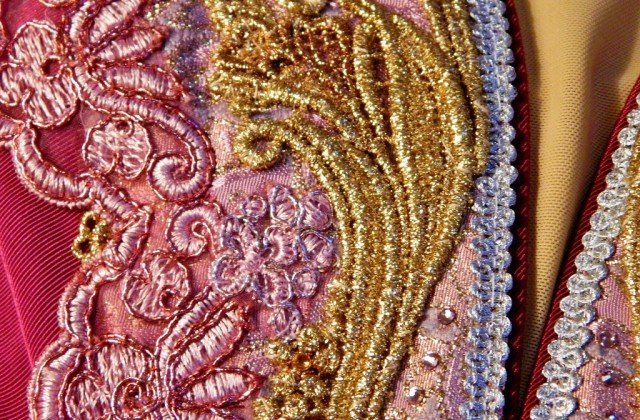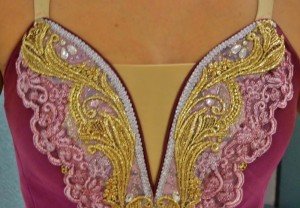Pattern Alterations on a Bodice

Doing a pattern alteration on a Tutu Bodice requires understanding of where and how to alter on the body. Its not a simple case of taking it in where it is too big.
If a pattern is a couple of sizes too small or too big then a different pattern should be purchased. Unless there is an understanding of pattern drafting it is
not advised to alter it too much.
The shape of different seams on the bodice have their purpose and these need to be constant when adjusting it to fit.
The altering of specific lines on the bodice can change the working of the Bodice even if it then fits.
The Bodice should sit central and square on the Torso. Front centre is exactly that–sitting in the centre front.
Over the bust seams should run down the centre of the bust either at a slight angle down for a Long line Bodice or at an angle towards the centre front point of the
Classical Bodice.
Sides–The sides should sit under the armpit and be in alignment with the side of the body.
Centre Back– The centre back should be in the exact centre of the back.
Once these seams are in place and correct on the Body then other seams can be adjusted.
Each side should be fitted to the Dancer as the left and right sides of the body are different and it can’t be presumed they will match exactly when adjusting.
Quite often the different dance disciplines develop different muscles and these need to be accounted for.
The over the bust seam should only be adjusted on the middle panel and not the centre panel. (depending of course on what you are taking in or out)
A larger or smaller bust line is simply adjusted over the bust side panels with a small change to the centre front depending which you are doing.
The importance of adjusting correctly allows for the Bodice to fit firmly against the body and for the Dancer to feel free to move unrestricted.
If Boning is used on the seams then the understanding of what the bone is doing and why it is in that place should be researched or understood thoroughly.
A bone in an incorrect seam could distort the Bodice and so restrict the Dancer.
Nape or Girth adjusting–
The length is of utmost importance on the body as the waist should sit in the waist so anchoring the bodice—on a Classical Bodice.
The Long line Bodice also needs to fit in at the waist but this is less important when the Basque and waistband are beneath the Bodice doing the anchoring.
A Bodice which is too short in the girth or nape means the top half of the Body could be overexposed. Once a Dancer is moving the Bodice waist will be anchored to the waist and lifting her arms would have more of the chest exposed. This is worse on a fuller busted Dancer as her bust area needs to be totally secure.
Adjusting a pattern for a fuller busted Dancer requires the middle front panel to be altered along with opening out the central bustline. The corresponding centre front has to have that extra piece added to allow for the longer curve over the new bustline.
Back adjustments are more simple as the back is flatter and the middle back panel is easily changed. The back nape measurement is important as a guide but during a fitting has to be checked that it is sitting firmly in the waist so securing the front of the Bodice.
Different height back bodices perform different functions and are not just aesthetically pleasing.
A higher back as for a Longline bodice can be more important in a heavily partnered role as it is more firmly anchored to the body. They are also easily adapted for different size dancers.
Although some bodices have a very low back for these roles it usually means a very small dancer.
There are no hard and fast rules and sometimes you need to change according to what you are faced with at that time, the best way that works.
 Valorose Tutus and Textiles
Valorose Tutus and Textiles